#Thalictrum dioicum
Explore tagged Tumblr posts
Text

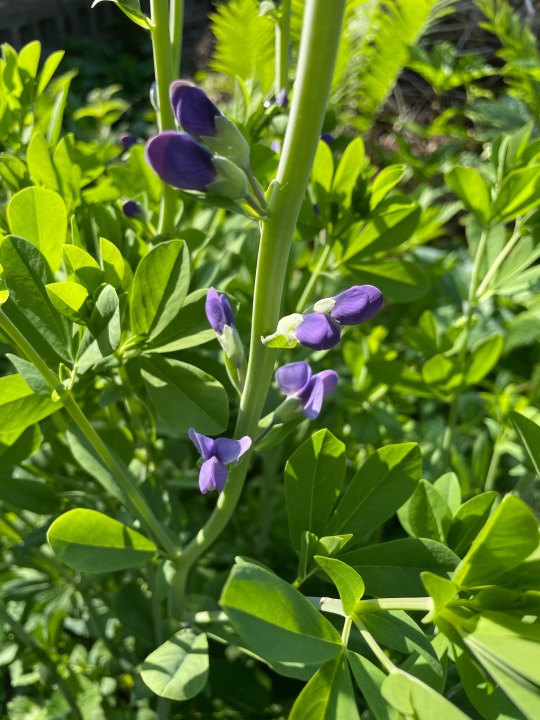


The garden is advancing. Meadow rue, baptisia, green dragon, and wild geranium are all showing up.
276 notes
·
View notes
Text


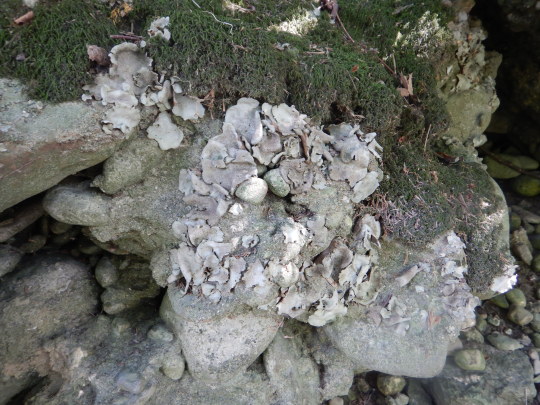
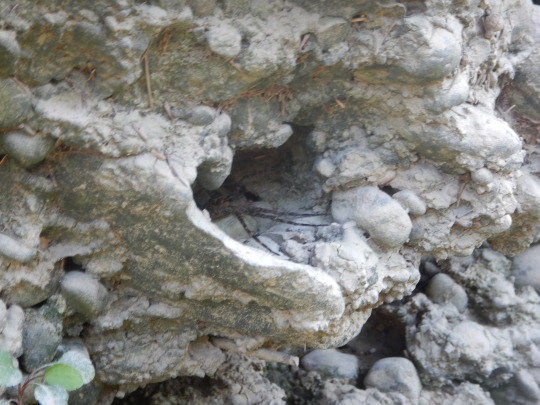

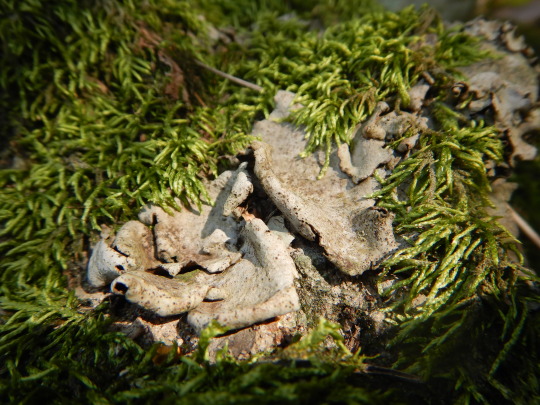

Mudstone conglomerate Pt1 Little Miami River
Thalictrum dioicum, Toxicodendron radicans, Sedum ternatum, Dolomedes albineus, and a very large amount of Dermatocarpon muhlenbergii.
I fully expect all of these plants/ spider/ and lichen to be common on rock features like this since it's perfect stable rocky habitat that experiences fairly wet conditions seasonally or rather gets sprayed occasionally, The level of disturbance is some what high in many cases but is variable with each one of these species. Poison ivy for example favors dryness and so does the early meadow rue growing with it but occasional removal of shade species near it is beneficial, Ide say the woodland stone crop prefers similar habit, and is most likely caused by missing these three species some how but flooding around them. The fishing spider cavity was actually near the high water mark on that rock and the rock was littered with them, this was just the only one with it's legs exposed. As for Muhlenberg's stipple back it loves spray and seasonally submerged systems of stable rocky habitat, where as sandstone stippleback/brook is a semi submerged obligate that needs near constant spraying and the white stipple back needs dry rocky habit only.
#ohio#ecology#thalictrum#thalictrum dioicum#toxicodendron radicans#toxicodendron#dermatocarpon#dermatocarpon muhlenbergii#dolomedes#dolomedes albineus#sedum ternatum#sedum#conglomerate
71 notes
·
View notes
Text
My Garden Flowers Part 2
All photos mine. The narrow-leaved sundrops photo is edited for colour since the camera apparently can't reproduce that intense of a yellow. Neither can any Photopea editing, but at least it's closer. It's the bright of highlighter yellow but more golden.























In order of appearance:
031. Philadelphia fleabane (Erigeron philadelphicus) A welcome "weed" I couldn't find available at any of the native plant places in Ontario (one in Manitoba carried it but it wasn't available) but she planted herself.
032. Canadian Lettuce (Lactuca canadensis) Another welcome "weed" that sadly didn't manage to reseed, but maybe one will turn up again.
033-034. Jack-in-the-Pulpit male and female flowers (Arisaema triphyllum) The male has one leaf set while the female has two. The babies only have a leafset and no flowers for the first couple years of their lives. Then they reach sexual maturity as males, the next year they'll be female and switch back and forth until the end of their lives.
035. Early Meadow Rue (Thalictrum dioicum) Not pictured as she hasn't flowered yet. She's new. Hopefully next year.
036. Creeping Oregon Grape (Mahonia repens) First they gave me a non-native cinquefoil but thankfully rectified it by giving me two of these when I'd only ordered one. They've flowered before, but never so profusely as they both have this spring, and there are a number of berries ripening! They also made a baby from previous years, or else one of them suckered.
037. Three-Leaved Coneflower (Rudbeckia triloba) So...I planted her. She died. I swear she died, like root and all, she did not make the winter. Didn't come up in the spring. But now she is in several places! Managed to reseed herself? Perhaps. I don't recall that she flowered the year I planted her. Had dormant seeds in her pot with her? Coincidental present from squirrels? Either way, she's roughly in the spot I wanted her and is flowering well. Who cares how she got there?
038. Witherod Viburnum (Viburnum nudum cassinoides) Not pictured as she hasn't flowered yet. Hopefully next year!
039. Purple Milkweed (Asclepias purpurascens) Not pictured as she hasn't flowered yet. She's a new milkweed species for me! If she makes it through the summer and then the winter I should have more flowers to post in a year or two. :)
040. Rosy Pussytoes (Antennaria rosea) Not pictured as she hasn't flowered yet. Surviving, though, which is saying something because not even weeds grow there. It's a very dry spot and I've been kind of neutred from watering. But I read that she likes dry and that spot is dry. So good luck to her.
041. Prairie Alumroot (Heuchera richardsonii) Not pictured as she hasn't flowered yet. Also surviving in said very dry area.
042. Ramps (Allium tricoccum) I really hope her seeds made baby ramps! They only flower after reaching maturity at seven years, which is why it's bad when people come and uproot the lot of them. And I mean, they taste nice but not where I understand why people do that.
043. Spicebush (Lindera benzoin) My native allspice substitute! Her berries are currently developing and will be red in the fall. Still hoping to attract spicebush swallowtails one day.
044. Bigleaf Lupine (Lupinus polyphyllus) Was supposed to be sundial lupine but definitely isn't. There is disagreement between VASCAN and the USDA over whether there is a single variant of one subspecies of L. polyphyllus that's native to Ontario. This one stays in my garden until that's settled. Anyway, she's a gorgeous plant but the reason to avoid intentionally planting it in Ontario is that it easily hybridizes with sundial lupine. The hairstreak caterpillar can only eat true sundial lupine leaves. I don't know if the variant that the USDA says is native is a misidentified hybrid (bad, but also doesn't seem like it because the variant listed by the USDA is Lupinus polyphyllus ssp. polyphyllus var. polyphyllus) or just a well-behaved variant (fine, just like there's a native subspecies of Phragmites australis). But again, I'll be leaving mine in until I learn for sure, and I won't be planting sundial lupine there to avoid hybridization.
045. Sweet Joe-Pyeweed (Eupatorium purpureum) Fuzzy flowers! She can get very tall. I'm also finding out she's a slow spreader as there is an individual nearby that I didn't plant.
046. Tall Bluebells (Mertensia paniculata) She survived several years and seemed to do well, but she didn't come up this spring. I'll need to get another one and try a spot that's not quite so tough.
047. Poke Milkweed (Asclepias exaltata) Not pictured as she hasn't flowered yet. But this is her second year, so to judge by some of my other species she should do it next year!
048. Narrow-Leaved Sundrops (Oenothera fruticosa) No flowers I've seen are as intensely yellow as those in this genus, and narrow-leaved sundrops and evening primrose in particular seem to just glow.
049. Cup Plant (Silphium perfoliatum) The coolest part of this plant is in the name: the bases of her leaf stalks wrap around the flower stalk to make cups at the joints. Water settles there and birds come to drink. I haven't seen this happen yet, but I'm waiting. The flowers, however, are quite sizable, very pretty, and attract lots of bees. She gets tall like some common sunflower cultivars.
050. Canada Violet (Viola canadensis) She barely came back this year after doing well for several. I think it was just a dry winter, but the point is for them to be able to survive all seasons any year, so I'm going to try somewhere else.
051. Stinging Nettle (Urtica gracilis) I'm assuming, anyway. She planted herself in my garden at my former apartment and I potted and took her with me when I moved. She's been doing okay. And bitey. She's very bitey.
052. Zigzag Goldenrod (Solidago flexicaulis) I didn't plant that, so free native plant for me! She's also made babies.
053. Cutleaf Coneflower (Rudbeckia laciniata) Finally flowering this year!
054. Lowbush Blueberry (Vaccinium angustifolium) Not pictured as I haven't got pictures yet.
055. Highbush Blueberry (Vaccinium corymbosum) A cultivar, though I can't remember which. I try to avoid cultivars and get the wild type if I can, but it's not always possible and not all cultivars are bad.
056. Lance Selfheal (Prunella vulgaris lanceolata) Selfheal is a common garden weed but unobtrusive and makes cute purple flowers. Not to mention edible and medicinal uses! This one is the subspecies native to Ontario proper, whereas her close cousin is common up here but apparently only native to the northeastern United States bordering southern Ontario.
057. Dense Blazing Star (Liatris spicata) She's fuzzy. She's magenta purple. Bees love her. She's perfect.
058. Fairy Candle (Actaea racemosa) She's related to the baneberries and is herself poisonous but she does have some limited edible uses. And her delicate white flowerheads are lovely.
059. Star-Flowered Onion (Allium stellata) So glad I was able to get her before the place that sold her stopped shipping to my province. No one in my province carries this! But she is native, I have her, and she is an ever green plant that simply resumes growth as soon as the snow melts.
060. Wood Violet (Viola sororia) Other than V. odorata, which is invasive in North America, if you see the classic blue, purple, and white violets growing everywhere in the spring in North America it's probably this species. Yes, violets can actually be blue! Not the sky blue of forgetmenots, dayflowers, or bluebells, or the deep blue of lobelias, but blue.
#blackswallowtailbutterfly#my photos#photography#my garden#garden flowers#native plant gardening#native flowers of Carolinian Canada and USA#Erigeron philadelphicus#Lactuca canadensis#Arisaema triphyllum#Clinopodium vulgare#Mahonia repens#Rudbeckia triloba#Allium tricoccum#Lindera benzoin#Lupinus polyphyllus#Eupatorium purpureum#Mertensia paniculata#Oenothera fruticosa#Silphium perfoliatum#Viola canadensis#Urtica gracilis#Solidago flexicaulis#Rudbeckia laciniata#Vaccinium corymbosum#Prunella vulgaris lanceolata#Liatris spicata#Actaea racemosa#Allium stellata
11 notes
·
View notes
Photo



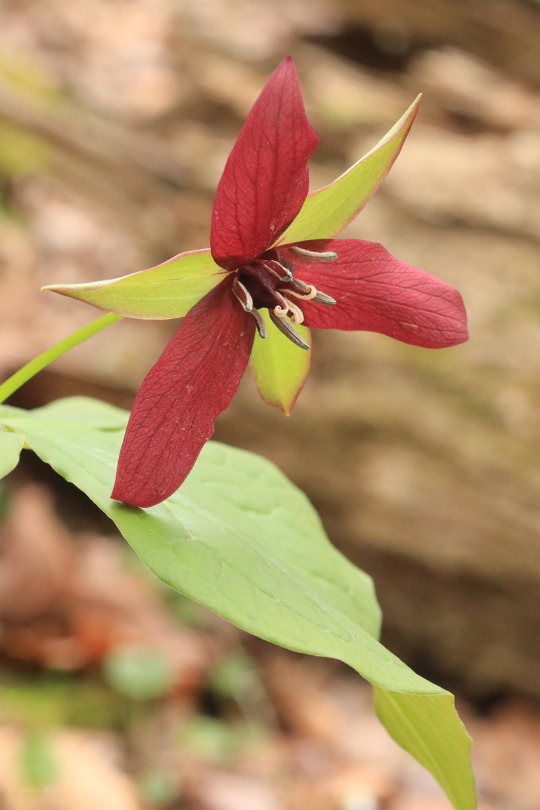
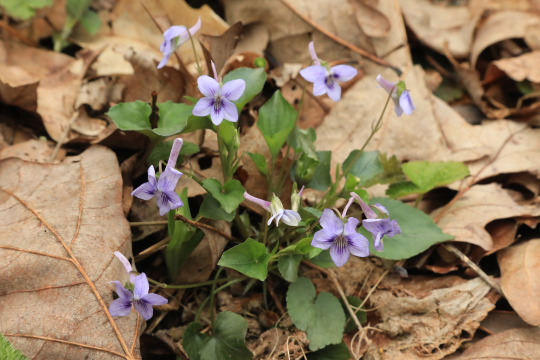




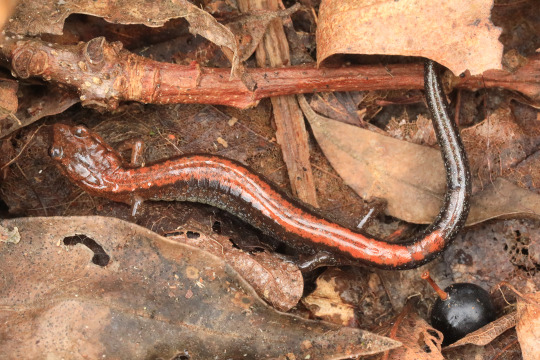
A few mementos from a short hike on the Virgin Hemlock Tail this morning. Cold, damp weather has settled into NC West Virginia, but any rain is welcome following an unusually dry winter and spring (opposite of the West Coast). From top: the ever balletic but stinky red trillium (Trillium erectum); long-spurred violet (Viola rostrata); wood anemone (Anemone quinquefolia), longing for a burst of sun to open its flowers; trailing arbutus (Epigaea repens), a ground-hugging shrub in the heath family; early meadow-rue (Thalictrum dioicum); and an Eastern red-backed salamander (Plethodon cinereus), a terrestrial salamander of rich, damp mountain woods.
#vandalia#west virginia#coopers rock state forest#little laurel run#virgin hemlock trail#spring#april#red trillium#purple trillium#wake robin#stinking benjamin#long-spurred violet#wood anemone#nightcaps#trailing arbutus#early meadow-rue#quicksilver-weed#eastern red-backed salamander#amphibians#appalachia
96 notes
·
View notes
Text

thalictrum dioicum early meadow rue albert fw vick jr, 1988, lady bird johnson wildflower center
2 notes
·
View notes
Text


Early meadow rue (Thalictrum dioicum)
1 note
·
View note
Photo

Inktober Day 16 - Early Meadow Rue (Thalictrum dioicum)
0 notes
Photo

Early Meadow-Rue (Thalictrum dioicum)
Facebook | YouTube | Ko-Fi
40 notes
·
View notes
Photo




Meadow Rue • Thalictrum dioicum
Plant Community: Oak-Hickory Forest
Native Status: Native to throughout the Eastern-Central US as well as Eastern Canada
Mature Size (h, w): 1-2 ft, 1-2 ft
Habitat/Preferred Conditions: Prefers full sun to partial shade. Average, well-drained soil.
Eco-indicator: N/A
Hardiness zone: 4-7
Leaf Color: Green
Flower Color: White-Green
Bloom Time: April-May
Theme: The seeds of the Meadow Rue are consumed by birds and mammalian wildlife. Additionally, the flowers are frequented by bees and butterflies.
Sources:
http://www.missouribotanicalgarden.org/PlantFinder/PlantFinderDetails.aspx?taxonid=286166&isprofile=1&basic=Thalictrum%20dioicum
https://www.wildflower.org/plants/result.php?id_plant=THDI
https://pss.uvm.edu/ppp/articles/rue.html
https://calscape.org/Thalictrum-fendleri-(Meadow-Rue)?srchcr=sc590909584c253
https://plants.usda.gov/core/profile?symbol=THDI
#vertical: herb#pollinator: insect#pollinator: bird#pollinator: mammal#pollinator: butterfly#pollinator: bee#community: oak hickory#place: brooks
0 notes
Photo

Thalictrum dioicum (Meadow Rue)
8 notes
·
View notes
Text




Cool things happening in the garden: lavender meadow rue, royal fern, green dragon, baptisia.
#flowers#garden#plantblr#gardeners on tumblr#may#arisaema dracontium#thalictrum dioicum#osmunda regalis#baptisia australis
337 notes
·
View notes
Photo


Thalictrum dioicum
Dioecious Early Meadow Rue.
Dioecium=dioicum
a specific epithet that refers to di= meaning two and ecium meaning houses(Gen Plur) or rather, two reproductive organs separated by individual.
On the left is a staminoidous flowering individual on the right a stigmatic flowering individual, both are along the path down to the talus yards in the open gorge after staircase leading away from the ranger station and narrows at Clifton Gorge, SNP, OH
16 notes
·
View notes
Photo

Early Meadow-rue, thalictrum dioicum - high resolution image from old book.
0 notes
Photo










The ancient bedrock that surrounds and underlies Hills Creek is in a constant state of change, as a soft layer of red shale steadily erodes underneath a harder layer of sandstone, eventually causing sections of sandstone to fracture, collapse and create waterfalls. The cool, damp environment of the Hills Creek gorge harbors a rich variety of life, including: Canada mayflower (Maianthemum canadense); early meadow rue (Thalictrum dioicum), whose male and female flowers are produced on separate plants; and two-leaf miterwort (Mitella diphylla), with its unusual flower structure, reminiscent of a bishop’s cap. The photos above were taken at the Falls of Hills Creek Scenic Area along the Highland Scenic Highway.
#appalachia#vandalia#west virginia#flora#wildflowers#spring#geology#natural history#falls of hills creek#highland scenic highway#monongahela national forest#allegheny mountains#maianthemum#canada mayflower#false lily-of-the-valley#thalictrum#early meadow-rue#early meadow rue#quicksilver-weed#mitella#two-leaf miterwort#bishop's cap#phlox#downy phlox
172 notes
·
View notes
Text

Early meadow rue, Thalictrum dioicum. From yesterday’s walk.
112 notes
·
View notes
Text

Early meadow rue, Thalictrum dioicum. Not a showy spring ephemeral but I don’t see it often so I’m happy when i do!
97 notes
·
View notes